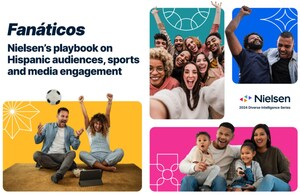Keep Calm And Reach For Your Phone: 53% Of Global Consumers Feel Anxious When Their Mobile Device Is Not Nearby, Says Nielsen
New Mobile Shopping and Banking Payment Report sheds light on consumers' mobile behaviors around the world and how mobile devices are transforming retail, banking and entertainment
NEW YORK, Oct. 11, 2016 /PRNewswire/ -- The struggle is real. In an increasingly connected world where news, retail shopping, banking and entertainment are available 24/7 on a variety of mobile devices, fear of missing out (FOMO) is a legitimate phenomenon. According to the new Nielsen Mobile Shopping, Banking and Payment Report, released today, 53% of global consumers say they feel anxious when their mobile devices are not close at hand. Two-thirds (56%) can't imagine life without mobile devices, and 70% say their mobile device makes their life better. Two-thirds of global respondents (66%) agree that face-to-face interactions are being replaced with electronic ones, but that might not be a problem as almost half (47%) say they prefer texting to talking anyway.
While mobile has transformed the way we communicate and stay connected with each other, it has also revolutionized the world of retail and banking as it is providing financial inclusion to the estimated 2 billion "unbanked" consumers around the world. Growth in access to cashless payments is estimated to lead to $10 trillion in additional consumer spending over the next decade, according to a new report by The Demand Institute, jointly operated by Nielsen and The Conference Board.
"Mobile commerce has enormous implications for the entire retail ecosystem," said Stuart Tagg, Financial Services Leader, Nielsen Europe. "Mobile devices are not only bringing new consumers into the modern, connected economy, but they are enabling a more customized experience, as products and services can be more closely tailored to behaviors, needs and preferences. But driving higher adoption and usage starts with a deep understanding of how consumers are shopping and transacting in a digital world and then use that understanding to design strategies around their habits and preferences."
Key Findings of the Nielsen Mobile Shopping, Banking and Payment Report:
- Globally, mobile devices are indispensable shopping buddies to compare prices (53%), look up product information (52%), look for coupons or deals (44%), make better shopping decisions (42%), make shopping trips quicker or more efficient (41%) and purchase products (38%).
- Worldwide, 38% of respondents say they purchased a product or service on their mobile device in the past six months, and 34% say they've used a mobile app to make a purchase in the same period. Asia-Pacific has the highest self-reported rates of mobile purchasing. Half of respondents in China (50%), and roughly half in India (49%), South Korea (47%) and Vietnam (46%) say they purchased a product or service using their mobile device in the past six months.
- Globally, mobile banking activities, such as accessing account information (47%) and paying bills (42%) are more common than transferring money between bank accounts (36%).
- Around the world, just over one-quarter of respondents (27%) say they're highly likely to use a mobile-only bank serviced entirely through a mobile app. Mobile-only banking is most popular in developing countries with large unbanked populations, with usage rates highest in India (46%), Indonesia (37%), Mexico (34%) and Turkey (34%).
- Only 28% of global respondents are highly likely to use mobile payments in bars, restaurants or retail stores, with rates highest in India (46%) and China (45%).
To download the full report, please visit nielsen.com.
ABOUT THE NIELSEN GLOBAL SURVEY METHODOLOGY
The Nielsen Mobile Shopping, Banking and Payment Survey was conducted March 1–23, 2016, and polled more than 30,000 online respondents in 63 countries throughout Asia-Pacific, Europe, Latin America, the Middle East/Africa and North America to understand how mobile devices are influencing three distinct yet interconnected activities: shopping, banking and payments. Nielsen examined the kinds of mobile shopping, banking and payment activities respondents are currently engaged in and their likelihood to participate in the future. We also examined the barriers to adoption for mobile banking and payments, as well as the incentives that would encourage wider use. The sample includes internet users who agreed to participate in this survey and has quotas based on age and sex for each country. It is weighted to be representative of internet consumers by country. Because the sample is based on those who agreed to participate, no estimates of theoretical sampling error can be calculated. However, a probability sample of equivalent size would have a margin of error of ±0.6% at the global level. This Nielsen survey is based only on the behavior of respondents with online access. Internet penetration rates vary by country. Nielsen uses a minimum reporting standard of 60% internet penetration or an online population of 10 million for survey inclusion.
ABOUT NIELSEN
Nielsen Holdings plc (NYSE: NLSN) is a global performance management company that provides a comprehensive understanding of what consumers Watch and Buy. The Company's Watch segment provides media and advertising clients with Nielsen Total Audience measurement services across all devices where content—video, audio and text—is consumed. The Buy segment offers consumer packaged goods manufacturers and retailers the industry's only global view of retail performance measurement. By integrating information from its Watch and Buy segments and other data sources, Nielsen provides its clients with both world-class measurement as well as analytics that help improve performance. Nielsen, an S&P 500 company, has operations in over 100 countries that cover more than 90% of the world's population. For more information, visit www.nielsen.com.
Logo - http://photos.prnewswire.com/prnh/20160121/324711LOGO
SOURCE Nielsen
Related Links
WANT YOUR COMPANY'S NEWS FEATURED ON PRNEWSWIRE.COM?
Newsrooms &
Influencers
Digital Media
Outlets
Journalists
Opted In






Share this article